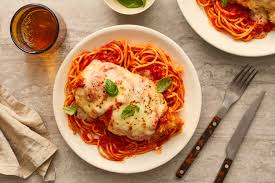Authentic Italian Recipes You Can Cook at Home
Italian cuisine is beloved worldwide for its simplicity, freshness, and heartwarming flavors. While many people associate it with pizza and pasta, authentic Italian cooking goes far beyond takeout menus. It’s about fresh ingredients, family traditions, and dishes that carry centuries of cultural history.
The best part? You don’t have to travel to Rome, Florence, or Naples to enjoy these flavors—you can bring Italy to your kitchen. In this guide, we’ll explore classic Italian recipes you can cook at home, with cultural insights, practical tips, and stories that prove why Italian food is more than a meal—it’s an experience.
Why Authenticity Matters in Italian Cooking
Story: When Anna, an Italian-American, visited her grandmother’s village in Sicily, she realized the “spaghetti and meatballs” she grew up eating wasn’t a traditional Italian dish at all—it was an Italian-American adaptation. Authentic Italian meals often focus on fewer, fresher ingredients and balance rather than heaviness.
Authenticity isn’t about rigid rules—it’s about honoring tradition, simplicity, and flavor. By cooking authentic Italian dishes, you’re tasting history and connecting to generations of food culture.

7 Authentic Italian Recipes to Try at Home
1. Spaghetti Aglio e Olio (Naples)
A dish that proves simple can be extraordinary.
What It Is:
Spaghetti tossed with garlic, olive oil, chili flakes, and parsley.
Why It’s Authentic:
This Neapolitan recipe dates back centuries as a quick meal for fishermen and workers.
Case Study: A survey by La Cucina Italiana magazine revealed that aglio e olio is among the most cooked dishes by Italians abroad—it’s budget-friendly, fast, and flavorful.
Cooking Tip: Use high-quality extra virgin olive oil. It’s the star ingredient.
2. Risotto alla Milanese (Milan)
Creamy, golden, and comforting.
What It Is:
Risotto flavored with saffron, butter, and Parmesan.
Why It’s Authentic:
Originating in Milan, this dish showcases Northern Italy’s love for rice dishes, influenced by centuries of trade.
Story: In the 1500s, a glassmaker’s apprentice added saffron (used for coloring glass) to rice at a wedding feast. The vibrant yellow dish became a Milanese classic.
Cooking Tip: Patience is key—add broth gradually and stir constantly for creaminess.
3. Margherita Pizza (Naples)
Perhaps Italy’s most iconic export.
What It Is:
Thin crust topped with tomatoes, mozzarella, fresh basil, and olive oil.
Why It’s Authentic:
Created in 1889 to honor Queen Margherita, its colors (red, white, green) mirror the Italian flag.
Case Study: In 2017, UNESCO recognized Neapolitan pizza-making as part of the “Intangible Cultural Heritage of Humanity,” cementing its cultural value.
Cooking Tip: Use San Marzano tomatoes and fresh buffalo mozzarella for authenticity.

4. Osso Buco (Milan)
A hearty, slow-cooked masterpiece.
What It Is:
Braised veal shanks cooked with white wine, vegetables, and broth, often served with gremolata.
Why It’s Authentic:
“Osso buco” means “bone with a hole,” referring to the marrow bone—a prized delicacy in Lombardy.
Story: Traditionally cooked on Sundays, osso buco reflects Italy’s love of slow, shared meals.
Cooking Tip: Low and slow is the secret—allow flavors to meld over hours.
5. Lasagna alla Bolognese (Bologna)
Not your typical American lasagna.
What It Is:
Layers of fresh pasta sheets, ragù (meat sauce), béchamel, and Parmesan.
Why It’s Authentic:
Originating in Emilia-Romagna, it uses ragù alla bolognese instead of ricotta-heavy fillings.
Case Study: Bologna’s Chamber of Commerce even registered an “official recipe” for ragù, highlighting its cultural importance.
Cooking Tip: Use fresh pasta sheets if possible—they absorb sauce better.
6. Tiramisu (Veneto)
Italy’s most famous dessert.
What It Is:
Layers of espresso-soaked ladyfingers, mascarpone cream, cocoa, and sometimes Marsala wine.
Why It’s Authentic:
Invented in the 1960s in Treviso, it quickly became a global dessert sensation.
Story: The name tiramisu means “pick me up,” a nod to the energizing espresso in its layers.
Cooking Tip: Use strong espresso, not drip coffee, for depth of flavor.
7. Gelato (Florence)
More than just “ice cream.”
What It Is:
Italian frozen dessert made with milk, less cream, and lower air content than ice cream—denser and more flavorful.
Why It’s Authentic:
Florence is credited with popularizing gelato during the Renaissance. Today, artisanal gelaterias remain central to Italian food culture.
Case Study: According to the Gelato World Tour, Italy produces more than 150,000 tons of gelato annually, much of it handcrafted.
Cooking Tip: Invest in quality ingredients—since gelato has less fat, flavors shine brighter.
Tips for Cooking Authentic Italian Food at Home
Quality Over Quantity – Italians use fewer ingredients, but they’re always fresh.
Respect Tradition, Then Adapt – Master the basics before adding your own twist.
Cook Seasonally – Italians shop daily at markets; try to use in-season produce.
Pair With Wine Thoughtfully – Aglio e olio with white wine, osso buco with Barolo.
Enjoy the Experience – Italian meals are about community—eat slowly, savor, and share.
Real-Life Story: From Tourist to Home Chef
Mark, a tourist from New York, took a cooking class in Tuscany where he learned to make lasagna and tiramisu. Back home, he began hosting monthly Italian dinners for friends. What started as a vacation experience became a lifelong passion—and even inspired him to open a small Italian supper club.
This shows that authentic Italian cooking isn’t just about food—it’s about connection, memory, and joy.
Why Italian Food Resonates Globally
Simplicity: Recipes don’t require complicated skills.
Universality: Pasta, pizza, and gelato are comfort foods worldwide.
Cultural Identity: Each dish tells a regional story—from Milan’s risotto to Naples’ pizza.
Case Study: According to UNESCO and Forbes, Italian cuisine consistently ranks among the top global food experiences, highlighting its universal appeal.

Conclusion
Cooking authentic Italian recipes at home isn’t just about recreating flavors—it’s about embracing a cultural philosophy: simplicity, quality, and togetherness.
From the humble spaghetti aglio e olio to the indulgent tiramisu, Italian dishes invite you to slow down, savor life, and share meals with loved ones.
So, the next time you crave Italian food, skip the takeout. Instead, bring Italy into your kitchen—because authentic Italian cooking isn’t complicated, it’s soulful.
References
La Cucina Italiana – Aglio e Olio Origins
Accademia Italiana della Cucina – Risotto alla Milanese
UNESCO – Neapolitan Pizza Heritage
Italian Chamber of Commerce (Bologna) – Official Ragù alla Bolognese
Smithsonian Magazine – History of Tiramisu
Gelato World Tour – Artisanal Gelato Stats
BBC Good Food – Osso Buco Origins
Forbes – Italian Cuisine Among World’s Favorites
National Geographic – Regional Italian Food Traditions
Harvard T.H. Chan School of Public Health – Mediterranean Diet & Italian Food

